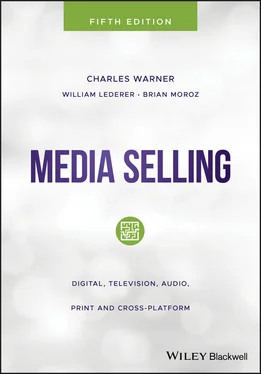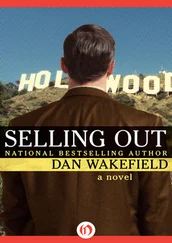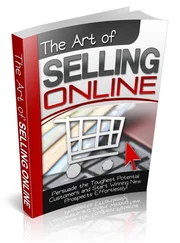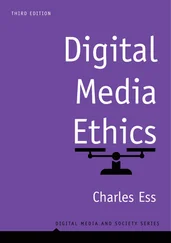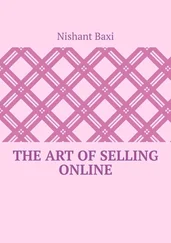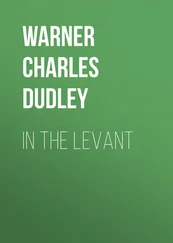12 Peters, Thomas J. and Waterman, Robert H. Jr. 1982. In Search of Excellence: Lessons from America’s Best Run Companies. New York: Harper & Row.
13 Pink, Daniel. 2009. Drive: The Surprising Truth About What Motivates Us. New York: Riverhead Books.
14 Waitley, Dennis.1995. Empires of the Mind. New York: William Morrow.
1 Daniel Goleman’s website and blog ( www.danielgoleman.info)
2 Lessons for Living website ( www.lessons4living.com)
3 Core competencies ( www.mediaselling.us/downloads.html)
1 1Anderson, Chris. 2013. “How to give a killer presentation.” Harvard Business Review, June.
2 2Retrieved from https://www.amazon.com/gp/bestsellers/2008/books.
3 3Gladwell, Malcolm . 2008. Outliers: The Story of Success . New York: Little, Brown and Company.
4 4Ibid.
5 5Ibid.
6 6Retrieved from http://projects.ict.usc.edu/itw/gel/EricssonDeliberatePracticePR93.PDF.
7 7Colvin, Geoff . 2008. Talent Is Overrated: What Really Separates World‐Class Performers From Everybody Else . New York: Portfolio.
8 8Ibid.
9 9Ibid.
10 10“Masters of scale with Reid Hoffman.” Retrieved from https://www.stitcher.com/podcast/stitcher/masters‐of‐scale/e/53503384.
11 11Retrieved from https:///.brainyquote.com/lists/authors/top_10_walt_disney_quotes.
12 12Ben‐Shahar, Tal . 2007. Happier: Learn the Secrets to Daily Joy and lasting Fulfillment . New York: McGraw‐Hill.
13 13Keller, Helen. 1903. The Story of My Life. Bantam Classics, reissue ed. 1991.
14 14Personal conversation, October 2002.
15 15Gerstner, Louis V. Jr. 2002. Who Says Elephants Can’t Dance? Inside IBM’s Historic Turnaround . New York: Harper Business.
16 16Ibid.
17 17“Masters of scale with Reid Hoffman.” Retrieved from https://www.stitcher.com/podcast/stitcher/masters‐of‐scale/e/53503384.
18 18Pink, Daniel . 2009. Drive: The Surprising Truth About What Motivates Us . New York: Riverhead Books.
19 19Lakoff, George . 2014. Don’t Think of an Elephant: Know Your Values and Frame the Debate . White River Junction, VT: Chelsea Green Publishing.
20 20Johnson, Spencer and Wilson, Larry . 2002. The One Minute Sales Person . New York: William Morrow.
21 21Retrieved from https://www.nytimes.com/video/sports/olympics/100000005699888/olympics‐lowell‐bailey.html.
22 22Retrieved from https://www.nytimes.com/video/sports/olympics/100000005699977/olympics‐sadie‐bjornsen.html.
23 23Retrieved from https://www.nytimes.com/video/sports/olympics/100000005700038/olympics‐brenna‐huckaby.html .
24 24Collins, James C. and Porras, Jerry . 1994. Built to Last: Successful Habits of Visionary Companies . Harper Business.
25 25Ibid.
26 26“How Jeff Bezos leads.” Retrieved from https://www.axios.com/jeff‐bezos‐amazon‐leadership‐seven‐essentials‐3c627861‐b3ed‐4335‐baae‐b8a768b24cc2.html.
27 27Peters, Thomas J. and Waterman, Robert H. Jr. 1982. In Search of Excellence: Lessons from America’s Best‐Run Companies . New York: Harper & Row.
Charles Warner
Old‐Fashioned Models of Selling
Old Models Don’t Work In the Digital Era
The Current Model: Selling as Educating
The Importance of Emotional Intelligence
In 1957, I got my first sales job at WSPA‐TV, the CBS affiliate in Spartanburg, SC. My first sale was to Mr. Parrott of Parrott’s Florist. The owner of WSPA‐TV, Walter Brown, knew Mr. Parrot and bought flowers from him weekly for his home and for the station. Mr. Brown sent me to see Mr. Parrott because a CBS program, “See It Now” with Edward R. Morrow was sponsored on the network by Florist Telegraph Delivery (FTD). Because of the two men’s relationship I got an order for a 20‐second commercial that ran before the network program. When he gave me the order, Mr. Parrott said he’d “try it once,” but when I returned to see Mr. Parrott the next day after his commercial ran and asked him if he would like to renew for another 13 weeks, he said, “No. I didn’t get any results. No one called.”
When I retuned downhearted to the station, my general sales manager asked, “How did it go? Did you close him?”
“No. He said he didn’t get any results,” I replied sheepishly.
“That’s a common objection,” replied my sales manager. “You should have asked him a bunch of questions that led him to the answer you wanted him to give you and then sold him sizzle!”
“Sizzle?”
“Yeah, you know, ‘sell the sizzle, not the steak!”’ My sales manager always spoke in exclamation points. It was his way of showing that he was enthusiastic.
“Enthusiasm, enthusiasm! Enthusiasm is what gets orders! Always sell the sizzle!” He might as well have said, “Sell him magic!” for all I knew. And with that, he reached back to his small bookshelf, took out a book, and handed it to me. “Read this!”, said my sales manager, “it’s by Elmer Wheeler and it’s called Sizzlemanship ! It’s the greatest book ever written about selling! Memorize it!”
Old‐Fashioned Models of Selling
In 1957, books on selling, such as Sizzlemanship!, Frank Bettger’s How I Raised Myself from Failure to Success in Selling , and Og Mandino’s ode of humility, The Greatest Salesman in the World, preached a model of selling that was developed in the 1920s, 1930s, and 1940s. These books on selling urged the use of techniques and tricks that were relatively successful for products that could be sold in one encounter, that were often low‐cost, and for which people could be badgered into buying, often just to get rid of the salesperson.
These outmoded selling models used simple mnemonics to guide salespeople, such as AIDA, which stood for Attention, Interest, Desire, and Action and ABC, which stood for Always Be Closing and which was made notorious by Alex Baldwin in the David‐ Mamet‐scripted play and movie “Glengarry Glen Ross.” The old‐time sales practitioners urged outrageous, often silly, techniques for getting a prospect’s attention and closing sales. They advocated manipulative techniques such as “sizzlemanship” to get interest and create desire (usually by overselling and overpromising). And they advocated a number of techniques, such as ABC, that pressured prospects to act immediately and which allowed a salesperson to slam down a one‐time sale. While there is nothing necessarily wrong with the AIDA and ABC mnemonics, these old‐fashioned, hard‐sell techniques, which include the “tell‐and‐sell” model, are largely responsible for the bad reputations that salespeople are often saddled with today.
Old Models Don’t Work In the Digital Era
Carl Zaiss and Thomas Gordon point out in their excellent book, Sales Effectiveness Training , that old selling models do not work in a highly competitive, digital‐oriented, and data‐flooded business environment.
Rather than being seen as the manipulators and hard closers of the past, media salespeople need to be perceived as trusted and respected partners who provide insights and get results for their customers. Modern media salespeople must concentrate on long‐term, trusting personal relationships with buyers and clients. Remember, the biggest competition for media salespeople is algorithms, so developing emotional intelligence is vital to differentiate you from the AI used in algorithms.
The Zeiss and Gordon non‐manipulative advice might have been suitable for selling in the 1990s, but after the disrupting influence of the Internet and after 2003 when Google introduced its online auction AdWords i that featured a cost‐per‐click (CPC) pricing model, just being non‐manipulative is not enough. Media salespeople have to be able to analyze data in order to come up with insights and solutions and to educate prospects about the benefits of their product.
Читать дальше
